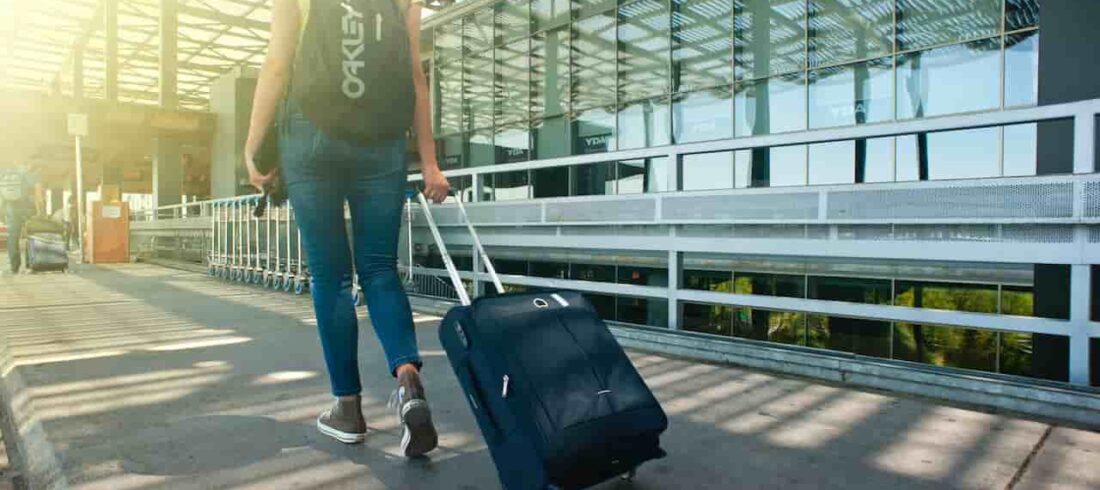- About Us
- Legal Services
- Family Law
- Property
- Marriage
- Immigration
- Contact
- Payments
See what Form I-129F information is needed. To begin the process of getting a K-1 visa, you need to file a petition for your fiancée with the United States Citizenship and Immigration Services (USCIS). When applying for a fiancée visa, you must gather specific documents to support your application. This is both for the fiancée visa as well as the US spouse visa. These include Form I-129F form which needs to be completed.

Step 1 – Form I-129F: Stage 1
This section of Form I-129F, titled “Part 1: Information about you,” outlines crucial details necessary for the petition process. Likewise the petitioner, a U.S. citizen, (being you) is required to provide their personal information in a structured manner on this form:
6.a. Family Name (Last Name), 6.b. Given Name (First Name), 6.c. Middle Name:
This is your complete name is required. Likewise, including your last name, first name, and middle name.
A-Number and U.S. Social Security Number:
Most will note need this however where applicable. You the petitioner must provide your Alien Registration Number (A-Number) and U.S. Social Security Number.
Selecting Beneficiary Classification:
This is where the form splits between a Thai fiancée and Thai wife. You need to indicate whether you are requesting classification for a fiancée (K-1 visa) or a Spouse (K-3 visa). Likewise if applying for a K-3 visa, you must confirm that you have filed the Form I-130.
Other Names Used:
You must list all other names you have ever used. These, including aliases, maiden names, and nicknames. Likewise additional space is provided in Part 8 if needed. See this below.
Mailing and Physical Address:
Your current mailing address is required. If different from the physical address, both addresses need to be provided.
IMBRA Disclosure:
Likewise you will need to disclose whether the International Marriage Broker Regulation Act (IMBRA) disclosure to the beneficiary is required. Speak to us about an imbra waiver as well as the imbra waiver form.
Online Account and Case Information:
If applicable, you should provide your USCIS Online Account Number and any related case information.
The form includes sections indicating the status of the petition, including whether it has been approved, denied, or if specific waivers were applied. Likewise there are designated sections for USCIS actions, remarks, and reasons for approval or denial. Note again that if the mailing and physical addresses differ. This as explained above. You will need to provide the physical address separately. Likewise always provide truthful and complete details in this part of the form. Many visa application denials come from errors in this section.
Physical Addresses (9.h, 11.a):
You are required to furnish your physical addresses for the past five years, both within and outside the United States. This includes providing your address in Thailand if you have resided there. It’s crucial to indicate whether your mailing address and physical address differ; there is designated space on the form to specify any disparities between the two. Please make sure to provide accurate and complete information in this regard.
Employment History (13, 15, 17):
You also have to share your work history for the last five years. Start with your current job. For each job, you should provide the employer’s full name, city or town, province, country, postal code, state, street address, apartment or suite number if applicable. Note that this becomes important later when you have to be assessed if you have to meet the US visa requirement. Likewise, your occupation, and the start and end dates of your employment.
Remember, being accurate and honest in filling out this information is really important. It helps the people processing your application understand your background and situation better.
This part of the form asks for more specific information about both you and your beneficiary (the person you’re bringing to the U.S.). Let’s break it down:
Employment Dates (20.a, 20.b):
You need to provide the start and end dates for your recent employment.
Personal Details (22 – 26):
This includes your date of birth, gender, city/town/village, country, province/state of birth, and your marital status. (If you are divorced then a divorce decree will be needed or a death certificate of your late spouse.)
Parents’ Information (27 – 36):
Details about your parents are needed, including their names, dates of birth, gender, country and city/town/village of birth, and their current residence details.
Marriage History (37 – 39):
If you’ve been previously married, you need to provide the names of your former spouses and the dates those marriages ended. (See above about the documentation needed)
Your Citizenship Status (40 – 46):
You need to specify how you became a U.S. citizen. This can be by birth, naturalization, or through your parents. If you obtained a Certificate of Naturalization or a Certificate of Citizenship. Likewise, details about that need to be provided.
Previous Form I-129F Filings (43 – 46):
If you’ve filed this form for another person before, you need to provide information about those cases. This is mainly for those who have done this type of application before.
Children Information (48 – 49):
If you have children under 18, you need to provide their ages. Documentation will also be needed.
Residence Details (50 – 51):
You need to list all the states and countries where you’ve lived since your 18th birthday. Speak to our immigration lawyer in Thailand for assistance and how to document this.
Beneficiary’s Personal Details (1.a – 5):
Similar to your details, this section asks for the name, date of birth, gender, city/town/village, country, and marital status of your Thai wife or Thai girlfriend. Again you will need assistance with this as the documents from Thailand needs to be obtained, translated as well as certified.
Other Names Used (10.a – 10.c):
If your Thai girlfriend or wife has used any other names like aliases or maiden names, those need to be listed. Also see if you Thai wife or girlfriend has changed her surname under the persons name change law.
Being accurate and thorough in filling out these details is really important. It helps the immigration authorities understand your background. Likewise, your relationship with your wife or Thai girlfriend. Also her eligibility for the visa. Make sure to use additional space if needed, provided in Part 8, to give complete and clear information.
Beneficiary’s Contact Information:
Mailing Address (11.a – 11.i):
The place where your Thai wife or Thai girlfriend receives mail. If they’ve moved in the last five years, those addresses need to be listed as well.
Physical Addresses (12.a – 15.b):
These are where your Thai girlfriend or wife has lived in the last five years, both inside and outside the United States. These would mainly be in Thailand and you will need to check how to provide proof of this when needed.
Employment History (16 – 22):
Details about your girlfriend or wife’s work in the last five years. This includes the employer’s name, address, her job, and the dates they worked there. This can be a commercial company or working at the local market or restaurant.
Parents’ Information (24 – 33):
Details about your girlfriends or wife’s parents, including their names, dates of birth, gender, and where they were born and currently reside.
Marriage History and Children (34 – 48):
If your wife or girlfriend was previously married or has children, information about them is needed. Take note of this if you are going to need to complete an application form for the K2 visa for the child of your Thai girlfriend. Likewise the K4 visa for your Thai wife’s minor children.
Planned U.S. Residence (45.a – 45.e):
Where your Thai girlfriend or Thai wife intends to live in the U.S.
Beneficiary’s Physical Address Abroad (47.a – 47.f):
Their current address outside the U.S.
Other Personal Details (49.a – 54):
Includes questions about their relationship to you, whether you’ve met in person, and if you used an international marriage broker. Se again the above section on this. Most in Thailand don’t use these types of services.
Protection Orders and Criminal History (1 – 3.c):
Questions about restraining orders and any past arrests or convictions related to specific crimes.
Being accurate and complete in providing this information is crucial for the immigration process. Make sure to use the additional space provided to explain any details thoroughly.
Questions 1 – 2.c:
These questions inquire about any past arrests, citations, charges, indictments, convictions, fines, or imprisonments for specific crimes. If any of these apply, detailed information about each incident, including dates and outcomes, must be provided.
Interpreter’s Details:
Interpreter’s Information (1.a – 3.h):
This section is for the interpreter’s contact details, including their name, address, phone number, and email address if applicable. You do get visa rejections as this is not completed correctly. Also ensure that is this correct.
Interpreter’s Certification (7.a – 7.b):
The interpreter certifies, under penalty of perjury, that they have accurately interpreted the questions and answers to the petitioner.
Preparer’s Details (if applicable):
Preparer’s Information (1.a – 3.h):
Similar to the interpreter’s section, this part is for the preparer’s contact details. Much like above you must ensure that their full details are included.
Preparer’s Certification (8.a – 8.b):
The preparer certifies, under penalty of perjury, that they prepared the petition at the request of the petitioner, and the petitioner reviewed and understood all the information provided.
It’s important to note that all the information provided in these sections must be truthful and complete, as any inconsistencies or omissions can affect the processing of the petition. Additionally, these certifications are made under penalty of perjury, emphasizing the legal significance of the provided information.
The provided text explains the purpose of Form I-129F, which is used to petition for a K-1 or K-3 nonimmigrant visa for a foreign fiancée or spouse to enter the United States. Here’s a summary of the key points:
Purpose of Form I-129F:
Used to bring a foreign fiancée into the U.S.
Intended for marrying within 90 days of arrival
Allows the fiancée to pursue adjustment of status to lawful permanent resident
Used for foreign spouses of U.S. citizens
Allows spouses to enter the U.S. while awaiting the availability of an immigrant visa
Intended for pursuing adjustment of status to lawful permanent resident
Aside from Form I-129F, a K-1 visa application typically requires the submission of the following forms and documents. You can also see the US visa from Thailand page for more information:
Please keep in mind that this is a general list, and additional documents might be necessary based on individual circumstances. It is advisable to seek personalized advice from an immigration attorney or expert to navigate the process effectively.
Moving to the United States requires many forms. The Form I-129F form is needed when you have applied for a US Visa for your Thai wife or Thai girlfriend. You can see the fiance visa Thailand on here as well as the K3 spouse visa as well. Likewise see also what is the K 2 visa as well as the what is IR1 visa article. Lastly also see the how long does it take to get a U.S. visa from Thailand on here.
